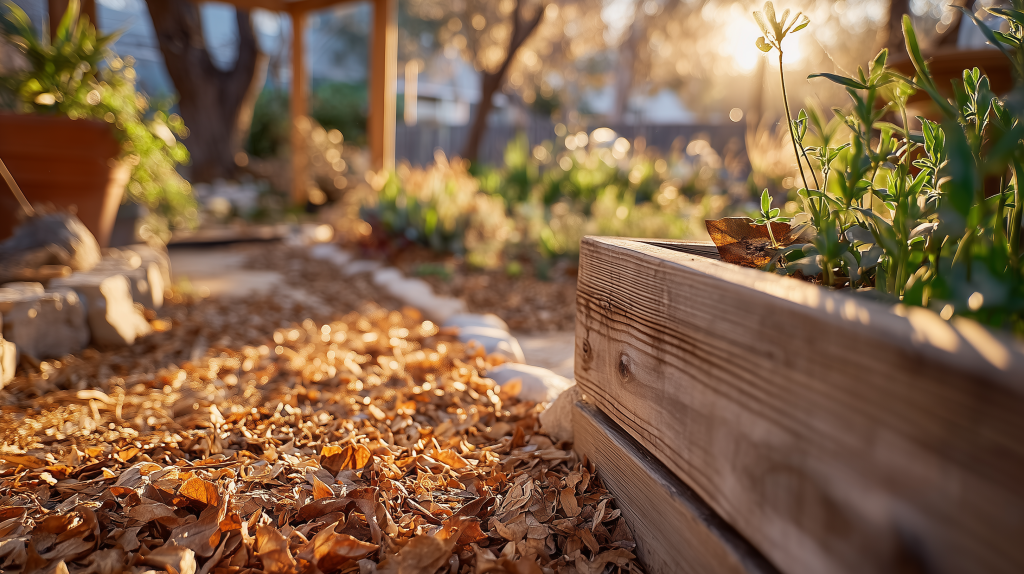Southern California’s year-round sunshine and warm temperatures make it a dream destination for residents and visitors alike. But as summer transitions to fall and the notorious Santa Ana winds begin to stir, it’s time to shift focus to one of the region’s most serious challenges: wildfire season.
When dry air combines with overgrown vegetation and gusty winds, Southern California becomes a tinderbox. The good news? You don’t have to wait helplessly for fire season to arrive. By taking proactive steps now, you can transform your backyard into a fire-resistant sanctuary that protects both your property and your peace of mind.
Here are five essential strategies to fireproof your outdoor space and keep your family safe when wildfire risk peaks.
Tip 1: Create defensible space around your home
The most critical fire safety measure is establishing a defensible buffer zone between your home and potential wildfire fuel. Within 30 feet of your house, remove all dead vegetation, fallen leaves, and overgrown shrubs. Trim tree branches so they’re at least 10 feet away from your roof and chimney. Space remaining plants at least twice their mature height apart to prevent fire from jumping between them. This zone should be meticulously maintained year-round, with regular debris removal and strategic plant placement that creates natural firebreaks.
Tip 2: Choose fire safe plants and materials
Not all plants are created equal when it comes to fire resistance. Replace highly flammable vegetation like pine, eucalyptus, and ornamental grasses with fire-resistant alternatives such as lavender, rosemary, sage, and rockrose. These plants contain higher moisture content and produce less combustible oils. For hardscaping, use materials like stone, concrete, gravel, and metal instead of wood mulch or bark chips. Create pathways and borders with these non-combustible materials to serve as additional firebreaks while maintaining your yard’s aesthetic appeal.

Tip 3: Maintain an effective irrigation system
A well-watered landscape is your first line of defense against fire. Install drip irrigation or soaker hoses to ensure consistent, deep watering that keeps plant moisture levels high. Focus extra attention on the areas closest to your home and along property lines. Consider installing a separate water source or storage system specifically for emergency fire suppression. Regularly check and maintain sprinkler systems, replacing broken heads and ensuring adequate coverage. During peak fire season, increase watering frequency for fire-resistant plants in your defensible space zones. Some drip irrigation systems are also eligible for rebates, check out IRWD.com/rebates for more information

Tip 4: Keep gutters, roofs, and vents clear
Embers can travel miles ahead of the main fire, landing on roofs and in gutters where accumulated debris becomes instant kindling. Clean gutters monthly during fire season, removing all leaves, pine needles, and organic matter. Install mesh screens over attic and foundation vents to prevent ember intrusion while maintaining airflow. Trim tree branches that hang over or near your roof, and consider installing fire-resistant roofing materials if replacement is needed. A metal roof or Class A fire-rated shingles can make the difference between minor damage and total loss.
Tip 5: Establish strategic fuel breaks and storage practices
Create intentional gaps in vegetation that can slow or stop fire’s progress across your property. Use pathways, driveways, patios, and lawn areas as natural fuel breaks. Store firewood, propane tanks, and other flammable materials at least 30 feet from structures, preferably in a shed or covered area away from the house. Remove “ladder fuels”—low-hanging branches and shrubs that can carry ground fires up into tree canopies. Keep grass short and well-watered, and consider replacing large lawn areas with gravel gardens or hardscaped zones that won’t fuel a fire’s spread.
We hope these tips help you stay safe and well-protected this fire season. For more landscaping and outdoor wellness tips, check out the rest of our blogs on yardtopia.com.


